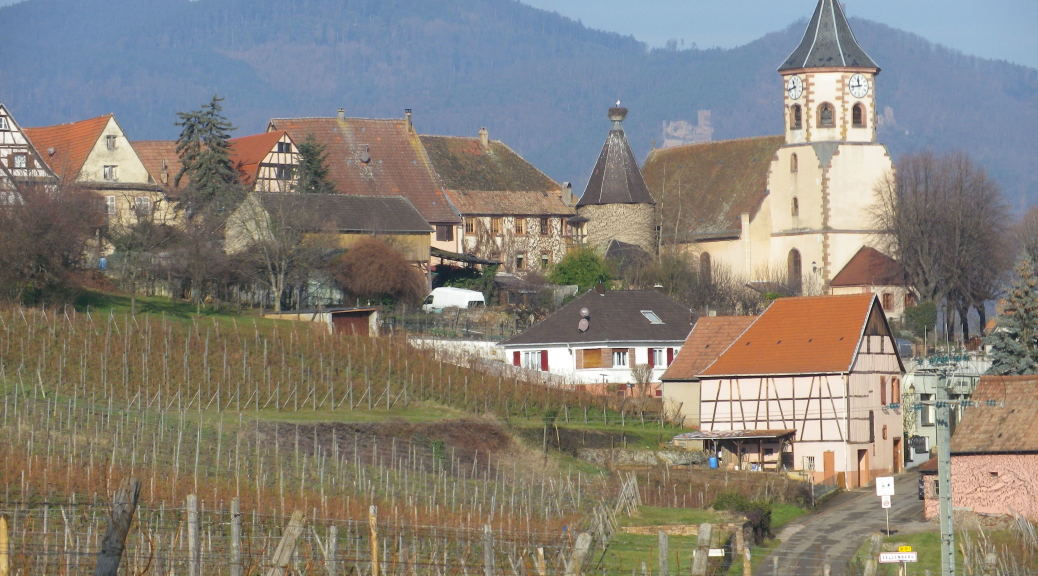Six small villages, nestled unobtrusively amidst the vineyards, hide a secret: some of the best wines in Alsace. The vineyards here aren’t just any sort of vineyards, rather they are Grands Crus; and the wines from these vineyards’ grapes create the highest quality wine in the hierarchy of Alsatian wine. Hiking through this area takes hikers gently past some of these renowned grand cru vineyards, and past the wineries that produce these fantastic wines. The combination of great wines to taste, and a well-laid out hike through the vineyards and associated villages, provides a wine-loving hiker an irresistible opportunity.
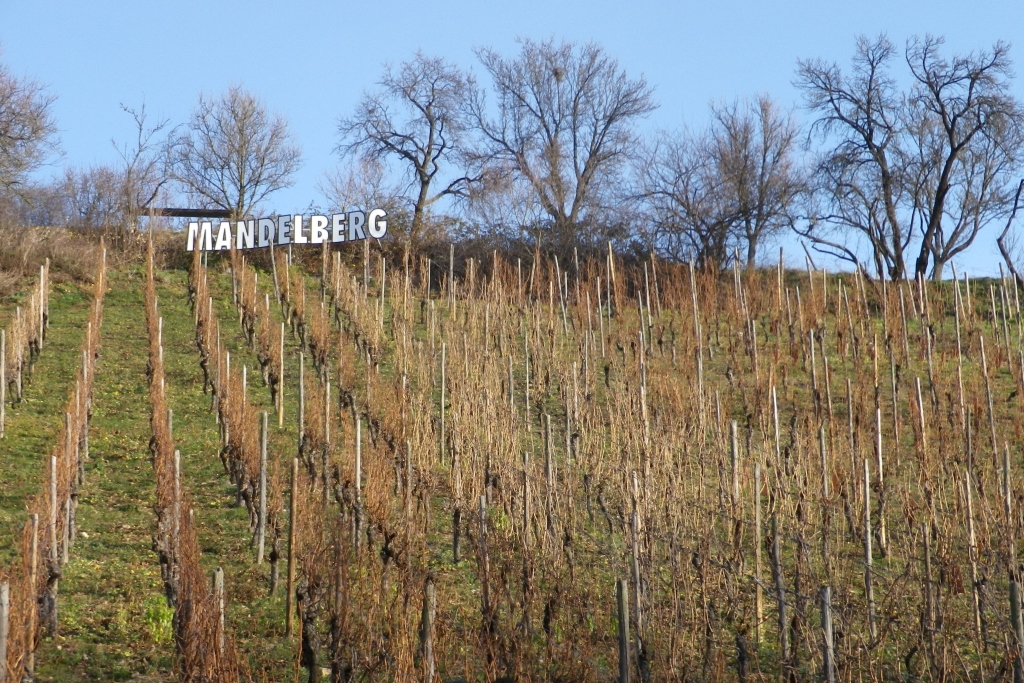
Sonnenglanz, Sporen, Schoenenbourg, Rosacker, Froehn, Mandelberg, Marckrain, which vineyard to start with? My journey began in Beblenheim with Sonnenglanz, a taste of a grand cru Gewuerztraminer, a delicious, awe-some, floral expression of the Gewuerztraminer of this area; but the actual hiking experience began on the other side of Riquewihr, by the Sporen vineyards. This was the longest stretch in vineyards, but the quiet mood was complemented by the military cemetery nearby, commemorating the dead who fought during the winter of 1945, in a military operation known as the Colmar Pocket. Americans forces also participated in this operation (and there is an impressive memorial to them), as well as many Algerian units. Ironically, they rest here, amongst the vineyards, having fought to protect this land of vines, vintners and their families.
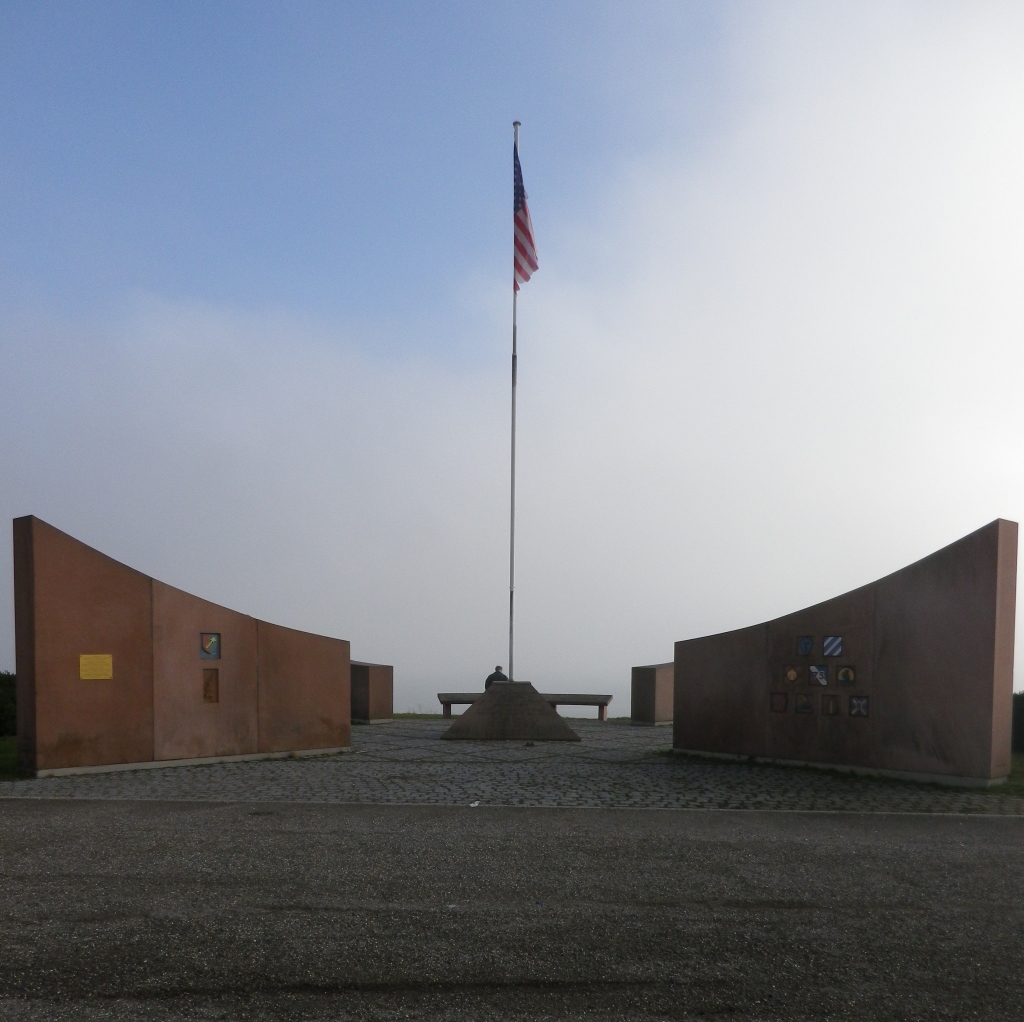
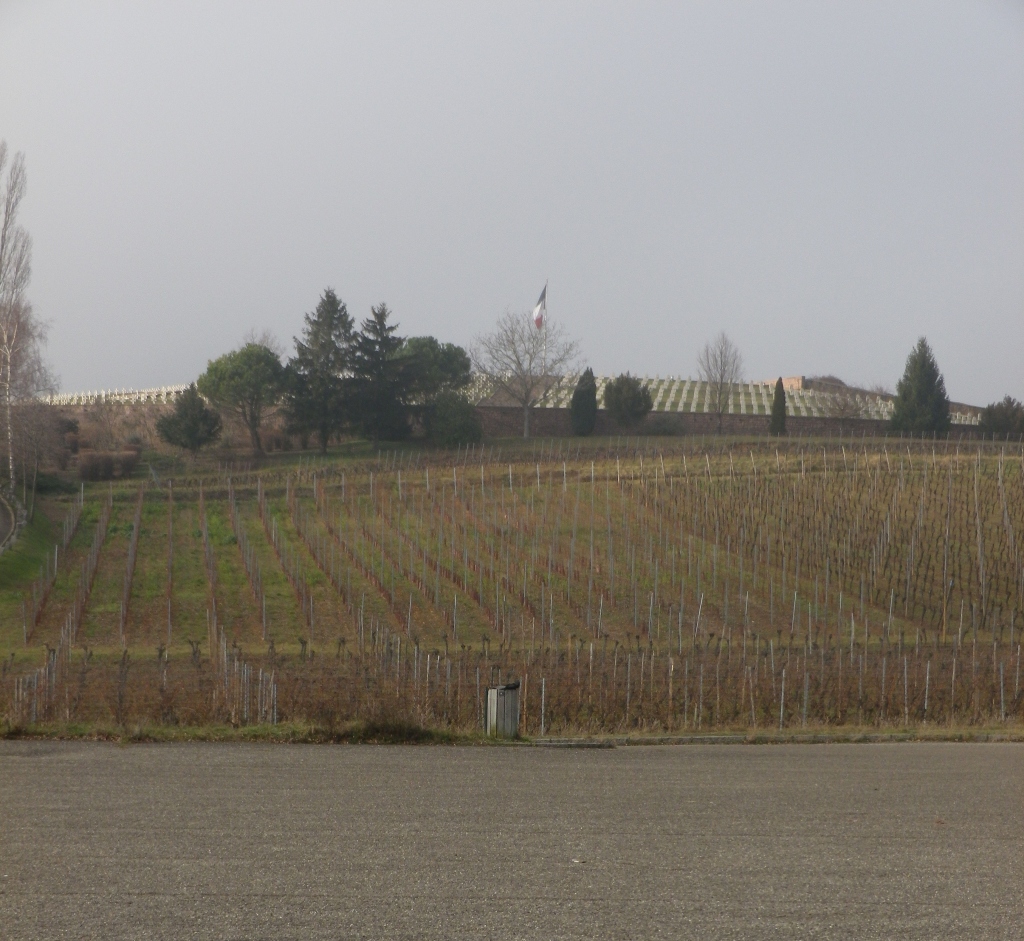
Two villages, Bennwihr and Mittelwihr, come quickly thereafter, and just in time for some refreshment. Mittelwihr is also known for its almonds. From the top its Grand Cru vineyard, the Mandelberg (“Almond Hill”) vineyard, Beblenheim (with its delicious Gewuerztraminer), and Zellenberg come into view.
Zellenberg is visually one of the most impressive villages, perched atop a mound, rising from the sea of vines. Other villages, lying as they do in hollows, leaving the higher slopes to prized vines, don’t have the perspective on the region that Zellenberg does. So it is worth a slight detour to the top of the town for the views and to read one of the several explanation boards that the local tourism syndicate erected to inform visitors about the village terroirs, grapes and wines. The views show the magnificent hills of Alsace, north and south, with the imposing Vosges crests behind them, and the Rhine plain to the east.
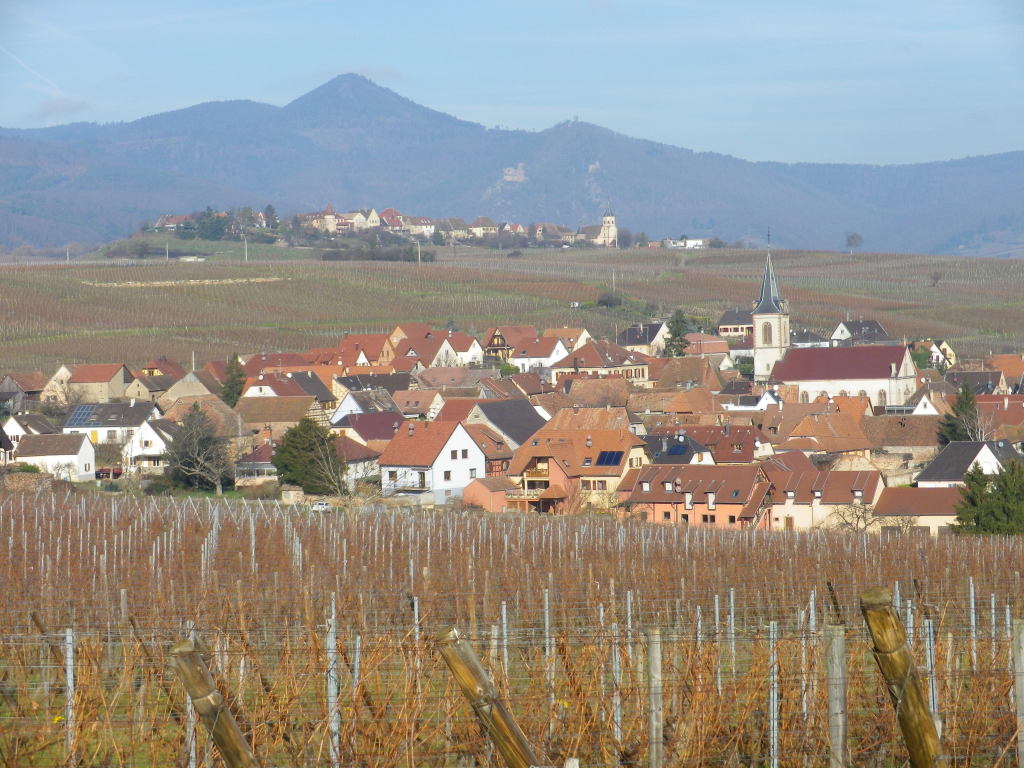
Leaving Zellenberg, a hike through vineyards heads northwest, toward prominent spurs of the Vosges, many mountaintops boasting castles. The most distant one visible (on a clear day) is very medieval-looking Haut-Koenigsbourg, ancestral home of the Hapsburg Dynasty. Closer by, on the mounts outside Ribeauville, are three castles: St Ulrich, Girsberg and Haut-Ribeaupierre. (Ribeauville, another well-known wine town in this area, is not on the trail. However, a marked hike and bike path leads to Ribeauville from Hunawihr, joining the Sentier des Grands Crus within a kilometer or so.)
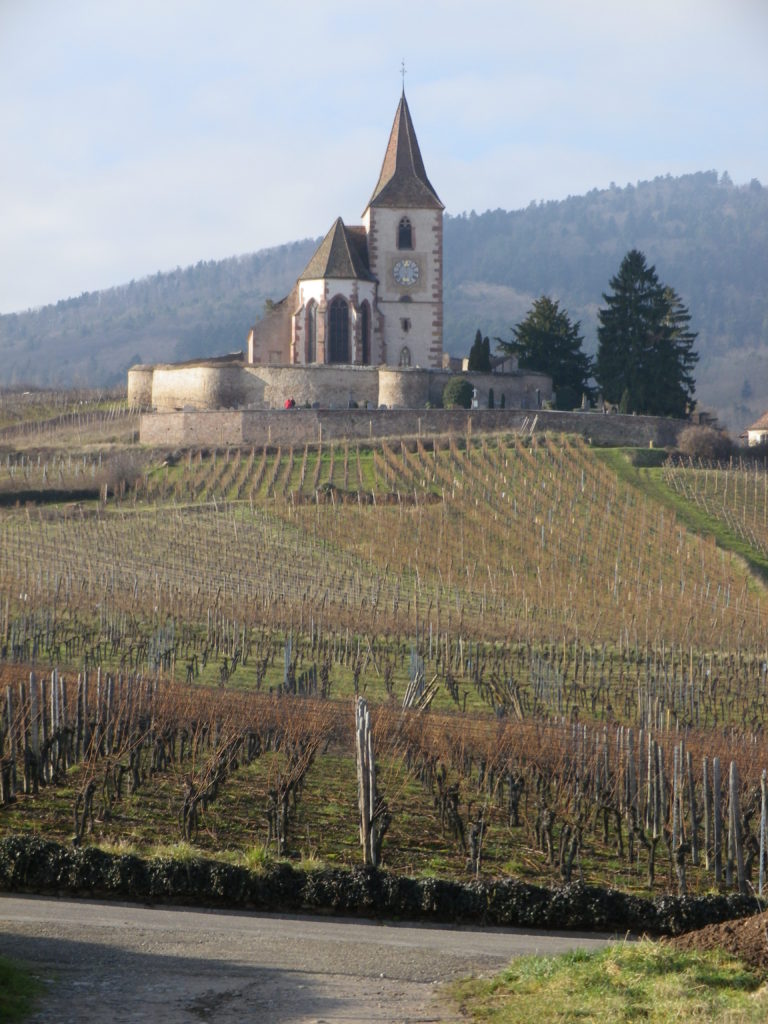
Hunawihr, the northern most village on the trail, offers a couple of interesting sites: a butterfly garden, a stork research park and center, and a fortified church. The path ascended somewhat steeply as it left the village for Riquewihr, and soon entered a wood, the one and only on this hike. It was a nice respite from the sun. However, as can happen quickly here, dark clouds and wind rushed down from behind the Vosges, and the sky above Riquewihr darkened ominously. One more explanation board, hastily taken in, and the final descent into town for wine. Hugging my victory bottle of wine, a Grand Cru Schoenenbourg Riesling, I made my way to the car, just as it began to rain.
